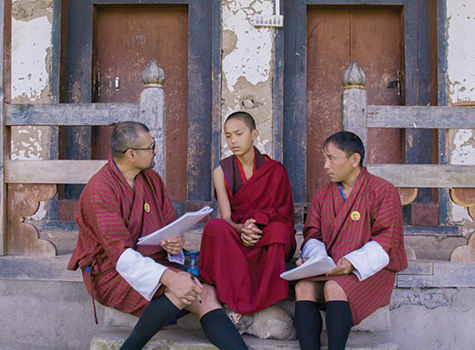When we envision Kathak, a North Indian classical dance form, we can almost hear hundreds of ghunghuroos or brass bells, we can envision the subtle expressions, graceful hand movements, the suggestive lift of an eyebrow, flowing costumes with wide span skirts, and the beautiful sound of North Indian Tabla drum that matches your heartbeat and so on.
Originally, only Brahmins had the responsibility of acquiring the knowledge and the privilege of disseminating that knowledge. From among them emerged a group of specialized practitioners who came to be known as Kathaks as they were the storytellers narrating philosophical and religious stories. Their act of story-telling developed into a full-fledged art form, which came to be known by their function namely Kathak.
For these priests, it was believed that attainment of spiritual bliss or Ananda was the ultimate goal. They practiced yoga and keeping that framework, the practice of dance was also considered to be one of the highest forms of practicing yoga. Especially, as dance involved all the eight stages of Yoga-, such as sadhana involving Yama (abstention), Niyama (regulation), asana (body postures), pranayama (breathing exercises), pratyahara (shutting out external impressions), dharana (concentration), dhyana (meditation) and samadhi (state of realization when subject and object become one).
I have written many articles about dance being derived from Yoga. This reading makes sense. We as dancers, always practice all these elements of Yoga especially during performances. You have to master breathing, practice dance with dedication, increase your stamina, shut the audience out while performing, meditate and stabilize your emotions and nervousness and soon. That is why I always recommend every dancer to learn Yoga at some point in his or her life.
I found this following information in a book I was reading by Shovana Narayan. She states that this community of Kathaks seems to have been in existence right from the Vedic times.
However, one of the direct early references to this dance form was in the Mahabharata. One of the verses in the Adiparva, quoted below, indirectly gives information on the profession of the Kathaks, stating that there was a group of Brahmins, who used mime to recite the tales for the lord using music and songs. “O King, the entourage that went to see off the Pandavas in exile in the surrounding forests, also included the Kathaks whose proficiency in telling divine tales most expressively and sweetly, provided sweet music to the ears and succor to the eyes, winning the hearts of all.”
Shovana mentions that the records also mention the male gurus of dance as Sailusas or Silalins. The Sailusas of Valmiki’s Ramayana as well as of the Yajurveda, bear close relation to the Silalins of Panini and Bharata’s Natyashastra and the Sailali of the Harshacharita.
All this information basically reiterates the fact that the teachers were usually males, the court dancers were women. Whether, the Kathaks were also known as the Sailusas and the Silalins or Sailalis, is open to interpretation and speculation. All these discussions are primarily to prove that Kathak dance form is not a recent evolution.
The Kathak, Bharatha Natyam and Kuchipudi dance forms all have the same three distinct parts to define their presentation. They all have the Nritta consisting of pure technics, Nrityam for expressions and Natyam to bring the other two together into a drama form. All these three dance forms are around two to three thousand years old. What makes Kathak stand on its own is its ability to have extreme speeds. It can have the slowest speed called ati vilambit or the fastest speed called ati drut, allowing the dancers to choreograph to almost any music.
As we speculated and learned a unique part of this history, we cannot ignore the evolution of Kathak in this 21st century. Some of the most significant developments are the entry of educated women dancers propagating this dance form, people having access to research, access to global dance styles, travelling, and emigrating to other countries.
In terms of presentation, what stands out is refinement and professionalism of performances today, using emerging technologies, modern and unique costumes influenced by international dance forms. Inherently a solo art form, Kathak has led itself to group compositions and dance dramas. The contemporary interpretations of the traditional literature and new works that are abstract are only possible due to the art form itself.
Due to globalization, many artists are working with international dance styles such as flamenco, classical ballet, and western music compositions. Many dancers have enriched Kathak traditions, keeping intact the spirit and flavor of this two-thousand years old dance form.
During Dances of India production on Saturday, April 23, 2016 at CPCC’s Halton Theater in Charlotte, NC, you can experience few glimpses of this dance form. Come and check it out.
Posted: Monday, February 29, 2016



